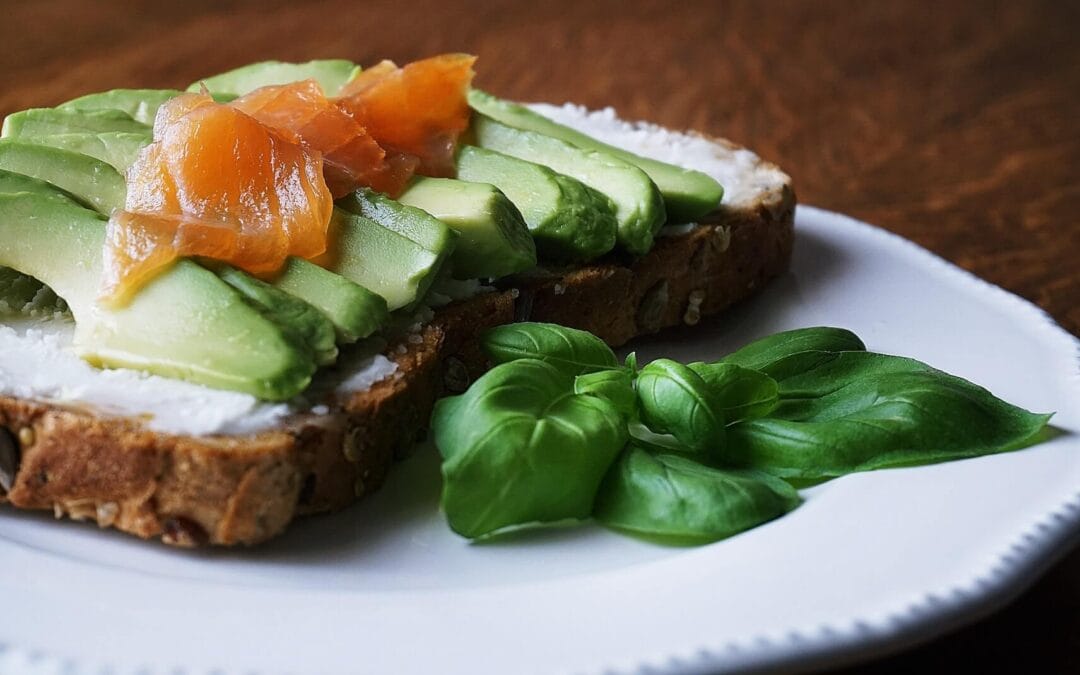The keto and Whole30 diets are popular eating patterns that promote health by eliminating problematic items. Grains, processed sugars, and junk food are examples of these difficult foods.
However, both diets promote natural foods such as meat, fish, eggs, butter, and ghee.
While they have some similarities, they also have significant variations, and understanding them can help you pick which diet is ideal for you.
This article compares keto with Whole30, covering their fundamentals, similarities, differences, and frequently asked questions and answers.
What is the Keto Diet?
The ketogenic or keto diet is a low-carbohydrate, high-fat, moderate-protein diet. Carbohydrates are restricted to 20-50 grams per day, forcing your body into ketosis, a natural metabolic condition in which ketone bodies (made by the liver) rise (1).
This diet was initially utilized as a treatment for juvenile epilepsy in 1921. People nowadays use it to reduce weight, improve mental clarity, boost their mood, and regulate their blood glucose levels (2, 3).
Several studies show that keto aids in the treatment of dementia, traumatic brain damage, and some malignancies (4, 5).
The keto diet allows the following foods:
- Beef, chicken, turkey, salmon, shrimp, and mussels are good protein sources.
- Fats include butter, ghee, olive oil, avocado, coconut, and MCT oil.
- Salad greens, broccoli, cauliflower, avocado, and berries are examples of fruits and veggies.
- Almonds, pecans, macadamia nuts, chia seeds, and flax seeds
- Sweeteners include stevia, monk fruit, and allulose.
- Beverage options include basic coffee, tea, sparkling water, pure alcohol, and low-carb beer.
What you can’t eat on the keto diet:
- Rice, quinoa, barley, wheat flour, oatmeal, barley, and bulgur are all grains.
- Examples of refined carbs include bagels, waffles, white rice, and morning cereals.
- Fruits and veggies high in sugar or starch: bananas, dates, grapes, potatoes, beets, carrots, lentils
- Alcohol with a high carb content: average beer, Bloody Mary, margarita, and pia colada
The keto diet is long-term and sustainable for general health and fitness. It also has other forms (such as cyclical and targeted keto) where you may intentionally boost your carbohydrates to complement your exercises.
What is the Whole30 Diet?
The Whole30 diet, as the name suggests, eliminates harmful foods for 30 days (6). It is an elimination diet in which grains, legumes, sugar, artificial sweeteners, and all forms of alcohol, dairy, and food additives such as monosodium glutamate (MSG), carrageenan, and sulfites are avoided.
The Whole30 diet is a fantastic alternative for people who wish to eat healthier and prevent digestive difficulties (and other symptoms) caused by food intolerances.
Lactose, present in dairy, for example, can induce gastrointestinal pain, bloating, diarrhea, and joint pain in sensitive people (7). Gluten sensitivity, for example, causes symptoms such as bloating, brain fog, diarrhea, and exhaustion within hours of consuming grains (8).
Whole30 may provide additional benefits because it eliminates wheat and other harmful items from your diet.
- Weight loss
- Reduced cravings
- Better relationship with food
- Improved gut health
- Clearer skin
Following the 30-day exclusion phase, you may begin reintroducing food categories one at a time, such as dairy, and meticulously monitor their impact on your health. As an example, you may reintroduce heavy cream to your morning coffee or munch on cheese.
If you don’t have any digestion troubles, cravings, skin problems, headaches, or declines in performance, you can reintroduce all of the items you’ve removed (9). If not, you should avoid certain “trigger foods” forever.
What’s the Difference Between the Keto and the Whole 30 Diet?
Although both keto and Whole30 promote clean eating and eliminating sugar, there are significant variations, beginning with the fact that Whole30 is a short-term diet. Continue reading for more information.
Short-Term vs. Long-Term
The Whole30 plan eliminates all dangerous foods for 30 days, but the keto diet has no time restriction. You may go all-in and achieve ketosis in 24 hours, or you can take a more moderate approach by progressively lowering your carbohydrates based on your tolerance.
Furthermore, if you feel well on this diet, you can remain on it for as long as you like (for example, 6 months or longer).
Stringent devotion is required because the Whole30 diet is just 30 days long. This entails pre-planning your meals, paying attention to nutrition labels, and knowing how to manage social situations.
Counting Macros
Another distinction between keto and Whole30 is that Whole30 does not require you to keep track of anything. You’re not intended to track your daily carbohydrates, fat, protein, or even calories. It would help if you consumed the permitted things — such as meat, fish, and eggs — until you were satisfied.
On the other hand, the keto diet limits carbohydrates to 50 grams or less to achieve ketosis. Eat more fat and less protein (or more if you’re following a high-protein keto diet). Knowing your macros and closely tracking them using a keto calculator will simplify entering ketosis and achieving specific goals, such as weight loss and blood sugar control.
Nutritional Ketosis
Is Whole30 a ketogenic diet? No. Because the Whole30 diet has no carb limit, it is not intended to put you in ketosis. It is, nevertheless, lower in carbohydrates than the typical American diet (SAD) since it excludes grains, conventional baked dishes, and processed foods, all of which are high in carbohydrates.
Keto and Whole30 Diet Similarities
Meanwhile, here’s a rundown of the diets’ similarities:
Weight Loss
Although the Whole30 diet was not intended for weight reduction in mind, many individuals lose weight by eliminating processed foods. Healthy meals have fewer calories and minimize binge eating, whereas processed foods have the opposite effect (10).
On the other hand, the keto diet causes weight reduction by carbohydrate restriction, resulting in water weight loss followed by fat loss (11). Obese people lost up to 13.6 kg in two months on the keto diet, according to one study (12).
Should you try keto or Whole30 to lose weight?
That depends on your other goals (for example, whether you want to achieve ketosis or treat a health issue like epilepsy) and what you’re able and willing to restrict.
A Focus On Whole Foods
Whole30 and keto both advocate consuming foods in their natural state, as stated previously in this article.
Although they might be restricted in specific ways — for example, Whole30 may allow all fruits while keto only allows low-carb fruits such as berries — the basic fact is that both diets regard highly processed foods as damaging to health.
According to research, eating highly processed meals increases a person’s chance of becoming overweight or obese. Furthermore, it increases the risk of metabolic syndrome, a combination of disorders that can lead to coronary heart disease, diabetes, and stroke (13, 14).
Lower your risks of developing health problems by prioritizing whole foods in your diet, whether through Whole30 or keto.
Both Diets Involve Restriction
Restriction in nutrition and fitness can help you achieve specific objectives (such as prolonged weight reduction) while also minimizing your exposure to trigger foods that cause digestive disorders (such as dairy and wheat).
Because Whole30 and keto include restrictions, they might be challenging to adhere to – at least at first. You, too, can remain with any diet by concentrating on its advantages, planning and preparing, and finding ways to enjoy it.
Rotate the items permitted in your selected diet to avoid nutritional deficits. In addition, if you still cannot achieve your dietary demands, consider taking a multivitamin and mineral supplement.
Protein Is Important
Whether you pick the keto or Whole30 diet, both are high in protein. Protein protects lean muscle during weight loss, heals tissues, and aids in immune system function (15, 16, 17).
Protein-rich foods that are keto-friendly and Whole30-friendly include beef, pig, chicken, tilapia, tuna, almonds, and chia seeds.
What’s the Downside wofKeto and Whole30 Diets?
Both diets require some restriction – keto restricts carbohydrates, while Whole30 restricts problematic items. Following such guidelines may cause more damage than benefit certain people by altering their relationship with food.
While these diets are scientifically established and promote physical health in many ways, they may worsen stress and anxiety in some people (but not all). This is one of the reasons why diets don’t always work (18).
If you believe that the keto or Whole30 diet guidelines cause overeating or make you feel constrained, it’s essential to seek out a more relaxing method.
Frequently Asked Questions
More solutions to frequently asked questions about Whole30 versus keto are provided below:
Which diet is healthier?
It is dependent on the individual following the diet. For example, the keto diet is thought to be healthier or more effective for those struggling to regulate their blood sugar levels and needing to shed a lot of weight. Meanwhile, for individuals looking to address dietary sensitivities, Whole30 may be a better alternative.
Does Whole30 put you in ketosis?
Someone can enter ketosis without realizing it if they dramatically limit their carbohydrate intake, regardless of their typical diet. Whole30, on the other hand, is not designed to put you in ketosis, which is the purpose of the keto diet. Whole30 excludes grains and junk foods but does not require you to measure carbohydrates or other macronutrients.
Do doctors recommend Whole 30?
The Whole30 diet is not usually recommended by doctors, although some do, including qualified dieticians who fully know its benefits. If you have any specific health concerns, consult a doctor before attempting this.
Keto vs. Whole30: The Bottom Line
Whole30 and keto are typically healthy since they promote whole foods and avoid those that may raise a person’s risk of weight gain, digestive disorders, skin problems, and other concerns caused by grains, sugar, and overly processed foods.
Both diets are similar, but they differ in that keto restricts carbs (an entire macronutrient) to achieve ketosis, whereas Whole30 eliminates items known to be harmful (high-carb or not).
If you’re still uncertain, try each diet and see how you feel. That is how you will discover your ideal diet. Research and talk with a healthcare practitioner before embarking on a new plan.
Are you curious about keto? We provide a 30-day program with all the materials needed to make it work for you.







0 Comments